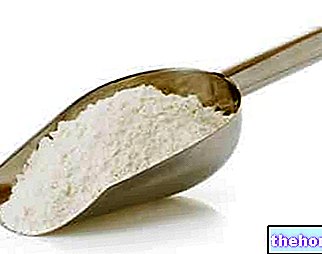
The "glycemic index is nothing" other than a value - between zero and one hundred - which identifies the ability of a certain food to raise blood sugar levels with respect to a standard reference value, which is that of pure glucose. Not to be mistaken: foods with a glycemic index below 35 are considered low Ig (they do not generate changes in blood sugar); those with Ig between 35 and 50 should be consumed in moderation, while foods that have a glycemic index higher than 50 should be consumed with extreme parsimony or avoided.
What do we find in this period on the fruit stand that is also a friend of blood sugar? Let's start by saying that the more the fruit is ripe, the more the sugar content increases and so does the glycemic index. Above the fruits that have a green light and can be eaten with peace of mind.
The autumn season is also the time when fruits such as bananas, kiwis, pineapples and chestnuts enter the shopping cart, to be consumed in moderation because they have an average glycemic index. Go ahead, however, for dried fruit (not for the mixes sold on the market if sweetened).
Apples, citrus fruits and berries are foods rich in flavanols and flavonoids, which help reduce blood pressure.
rustic and authentic. The protagonists of many preparations when the mercury falls are legumes, precious for stabilizing blood sugar because almost all of them have a low glycemic index. Not only that, legumes lower bad cholesterol (LDL) levels and, being rich in protein, help keep weight under control while preserving muscle mass.
Let's see what are the legumes with a low glycemic index:
- Lentils: Lentil fibers regulate the rate at which starches and carbohydrates are absorbed and help lower LDL cholesterol levels in the blood.In this way it is possible to avoid glycemic peaks, dangerous for cardiovascular diseases and insulin resistance, which is the antechamber of diabetes.
- Ceci: we could define them as an ancient super food. Chickpeas, of all legumes, seem to be the most portentous in helping to maintain a healthy body. They keep blood sugars at bay, are rich in macro nutrients, magnesium and folate above all, which significantly reduce the levels of homocysteine, an amino acid that increases the risk of strokes and heart attacks. Finally, they improve blood circulation.
- Peas: their sweetness must not be misleading. Peas, in fact, are highly suitable legumes for those who want to follow a correct diet, especially for those suffering from type 2 diabetes as they have a very low glycemic index.
- Beans: cannellini beans, white from Spain, borlotti beans. Beans help keep the rise in blood sugar at the end of a meal. Not only that, they are also able to reduce LDL cholesterol levels in the blood.
Pay attention only to broad beans which, despite being spring legumes, are often consumed in soups and winter soups: despite having many beneficial properties, in fact, they have an average glycemic index level. Therefore, they should be consumed in moderation.
A great way to balance excess carbohydrates and sugars? Match rice or pasta with legumes. Yes also to consume lentils, chickpeas, peas and beans as a side dish of fatty meats to counteract the action of cholesterol.
Among the autumn foods useful for managing glycemic spikes there are also many autumn foods that help control endometriosis and reduce associated pain.
The vegetable garden is generous during the autumn season. The harvest, then, is almost all with a low glycemic index. The protagonists of the table are the crucifers, a mix of extraordinary nutrients. They have a low caloric intake and are rich in potassium, calcium and phosphorus, vitamins A, C and K. They also hold the secret to longevity because they are a powerhouse of antioxidants. If you follow a diet with a low glycemic index, green light to the foods listed above. These vegetables are also among the best foods for strengthen the immune system.
The only autumn vegetable to avoid is pumpkin which has a very high glycemic index, like cooked potatoes and carrots.
Onions also have a low glycemic index. In reality, there is not a single onion. There are many types of onions and each Italian variety has its own characteristics.
In the future, knowing which and how many nutrients a certain food contains will be easier, thanks to the new Italian food labels and a nutritional logo called NutrInform Battery.




























